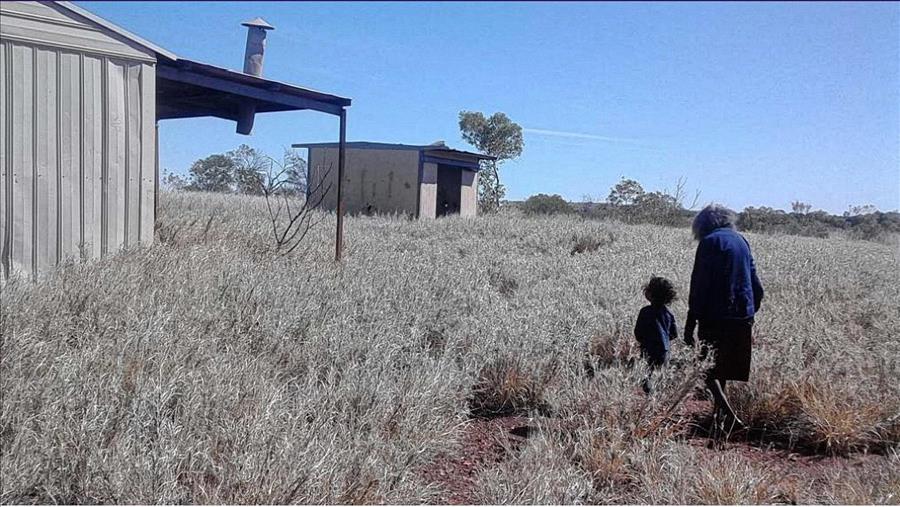
Fix housing and you'll reduce risks of coronavirus and other disease in remote Indigenous communities
(MENAFN- The Conversation) Remote Indigenous communities have taken swift and effective action to quarantine residents against the risks of COVID-19. Under a plan developed by the Aboriginal and Torres Strait Islander Advisory Group , entry to communities is restricted to essential visitors only. This is important, because crowded and malfunctioning housing in remote Indigenous communities heightens the risk of COVID-19 transmission . High rates of chronic disease mean COVID-19 outbreaks in Indigenous communities may cause high death rates .
The 'old story' of housing, crowding and health continues to be overlooked. A partnership between the University of Queensland and Anyinginyi Health Aboriginal Corporation, in the Northern Territory's (NT) Tennant Creek and Barkly region, re-opens this story. A new report from our work togethe is titled in Warumungu language as Piliyi Papulu Purrukaj-ji – 'Good Housing to Prevent Sickness'. It reveals the simplicity of the solution: new housing and budgets for repairs and maintenance can improve human health.
Read more: Coronavirus will devastate Aboriginal communities if we don't act now
Infection risks rise in crowded housingRates of crowded households are much higher in remote communities (34%) than in urban areas (8%). Our research in the Barkly region, 500km north of Alice Springs, found up to 22 residents in some three-bedroom houses. In one crowded house, a kidney dialysis patient and seven family members had slept in the yard for over a year in order to access clinical care.
Many Indigenous Australians lease social housing because of barriers to individual land ownership in remote Australia. Repairs and maintenance are more expensive in remote areas and our research found waiting periods are long. One resident told us:
Better 'health hardware' can prevent infectionsThe growing populations in communities are not matched by increased housing. Crowding is the inevitable result.
Crowded households place extra pressure on 'health hardware', the infrastructure that enables washing of bodies and clothing and other hygiene practices.
Read more: Homelessness and overcrowding expose us all to coronavirus. Here's what we can do to stop the spread
We interviewed residents who told us they lacked functioning bathrooms and washing machines and that toilets were blocked. One resident said:
A lack of health hardware increases the transmission risk of preventable, hygiene-related infectious diseases like COVID-19 . Anyinginyi clinicians report skin infections are more common than in urban areas, respiratory infections affect whole families in crowded houses, and they see daily cases of eye infections.
Data that we accessed from the clinic confirmed this situation. The highest infection diagnoses were skin infections (including boils, scabies and school sores), respiratory infections, and ear, nose and throat infections (especially middle ear infection ).
These infections can have long-term consequences. Repeated skin sores and throat infections from Group A streptococcal bacteria can contribute to chronic life-threatening conditions such as kidney disease and rheumatic heart disease (RHD). Indigenous NT residents have among the highest rates of RHD in the world, and Indigenous children in Central Australia have the highest rates of post-infection kidney disease (APSGN) .
Read more: The answer to Indigenous vulnerability to coronavirus: a more equitable public health agenda
Reviving a vision of healthy housing and peopleCrowded and unrepaired housing persists, despite the National Indigenous Reform Agreement stating over ten years ago: 'Children need to live in accommodation with adequate infrastructure conducive to good hygiene … and free of overcrowding.'
Indigenous housing programs, such as the National Partnership Agreement for Remote Indigenous Housing , have had varied success and sustainability in overcoming crowding and poor housing quality.
It is calculated about 5,500 new houses are required by 2028 to reduce the health impacts of crowding in remote communities. Earlier models still provide guidance for today's efforts. For example, Whitlam-era efforts supported culturally appropriate housing design, while the ATSIC period of the 1990s introduced Indigenous-led housing management and culturally-specific adaptation of tenancy agreements.
Our report reasserts the call to action for both new housing and regular repairs and maintenance (with adequate budgets) of existing housing in remote communities. The lack of effective treatment or a vaccine for COVID-19 make hygiene and social distancing critical . Yet crowding and faulty home infrastructure make these measures difficult if not impossible.
Indigenous Australians living on remote country urgently need additional and functional housing . This may begin to provide the long-term gains described to us by an experienced Aboriginal health worker:
Trisha Narurla Frank contributed to the writing of this article, and other staff from Anyinginyi Health Aboriginal Corporation provided their input and consent for the sharing of these findings.

Legal Disclaimer:
MENAFN provides the
information “as is” without warranty of any kind. We do not accept
any responsibility or liability for the accuracy, content, images,
videos, licenses, completeness, legality, or reliability of the information
contained in this article. If you have any complaints or copyright
issues related to this article, kindly contact the provider above.

















Comments
No comment